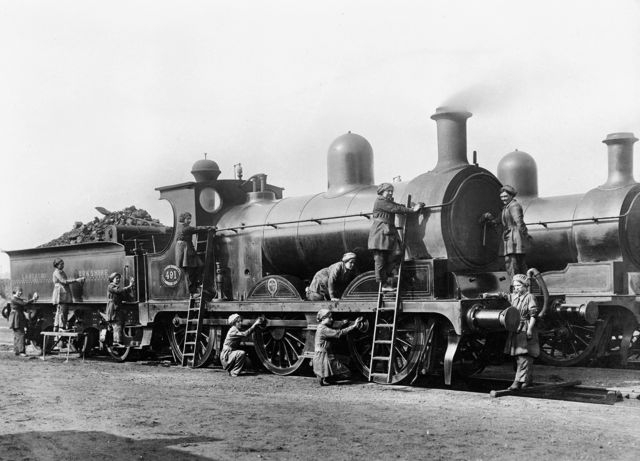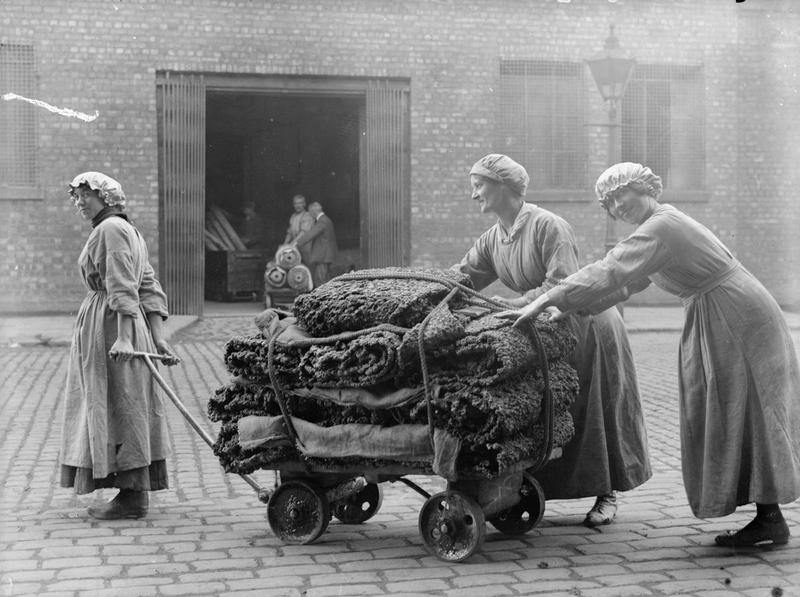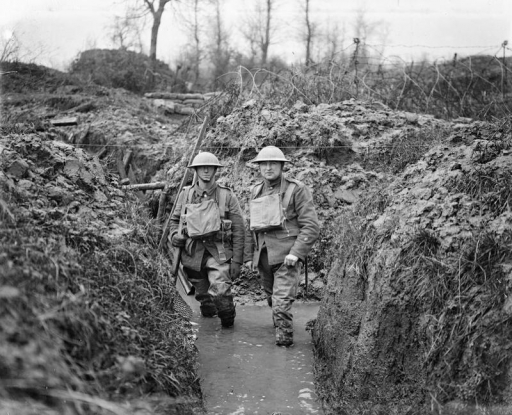An exhibition exploring the lives of people from the North West of England during the First World War has opened at IWM North in Manchester.
Their stories are told using more than 200 personal objects, films, sound recordings, photographs, artworks and letters, many of them on public display for the first time.
From Street to Trench: A World War that Shaped a Region launches the first major Imperial War Museum exhibition marking the Centenary of the First World War.
Items from IWM’s national collections are drawn together with objects on loan to reveal the experiences of those caught up in the conflict. They range from Victoria Cross recipients, to the poet, Wilfred Owen, and the future British Prime Minister, Clement Attlee.

Women workers at the Horwich engine shed cleaning a Lancashire and Yorkshire Railway locomotive © IWM (Q 107142)
Graham Boxer, IWM North’s Director, said: “One hundred years on, the objects we display highlight the poignancy and courage of people who shaped and were shaped by this first global conflict. Even a century later there are stories untold, experiences undiscovered and tales that will surprise.”
As the North West was a major focus for recruitment, many left the region for the first time to serve across the globe. The exhibition features stories of soldiers, sailors and pilots who fought in all of the major campaigns, from Gallipoli in Turkey, to the Somme in France and Ypres in Belgium.
On display is a rare Albert Medal awarded to a front line medic, Sergeant Victor Brookes, for his life-saving actions; a Victoria Cross belonging to the Cheshire soldier, John Davies, who put his life at risk to save others; and many other little known stories uncovered by IWM researchers.
There are rarely seen documents and manuscript poems providing an insight into Wilfred Owen’s experiences with the Manchester Regiment and the inspiration for his poetry.
On show for the first time is a letter from the Gallipoli front by Clement Attlee, an officer in the South Lancashire Regiment, who went on to lead the Labour government which introduced Britain’s National Health Service after the Second World War. 
Workers tow a trolley of raw rubber from a warehouse at the factory of Charles Macintosh and Sons Ltd in Manchester in September 1918 © IWM (Q 28227)
IWM North says film footage in the exhibition presents an “immersive snapshot” on the eve of war, while letters by two sisters from Liverpool offer a “graphic insight” into civilian attitudes to the war from start to finish.
Visitors are invited to discover how the industrial city of Manchester met the demands of an industrialised war, with innovations including a trench periscope created by the owner of Duerrs jam factory.
There’s the story of how 161 men from just 60 houses in a street in the Cheshire town of Altrincham served in the armed forces during the war.
Content specially researched and curated by children from Altrincham College of Arts explores six stories of the roles, lives and legacy of local people, including those of Chapel Street, ‘the bravest little street in England.’
The Imperial War Museum itself was founded in 1917 to mark the sacrifices of civilians and soldiers in the First World War.
From Street To Trench: A World War That Shaped A Region runs until 31st May 2015 at IWM North in Manchester, one of the five branches of the Imperial War Museum. Admission is free.
Source: IWM North
Images courtesy of the Imperial War Museum
Posted by: Peter Alhadeff, Centenary News
